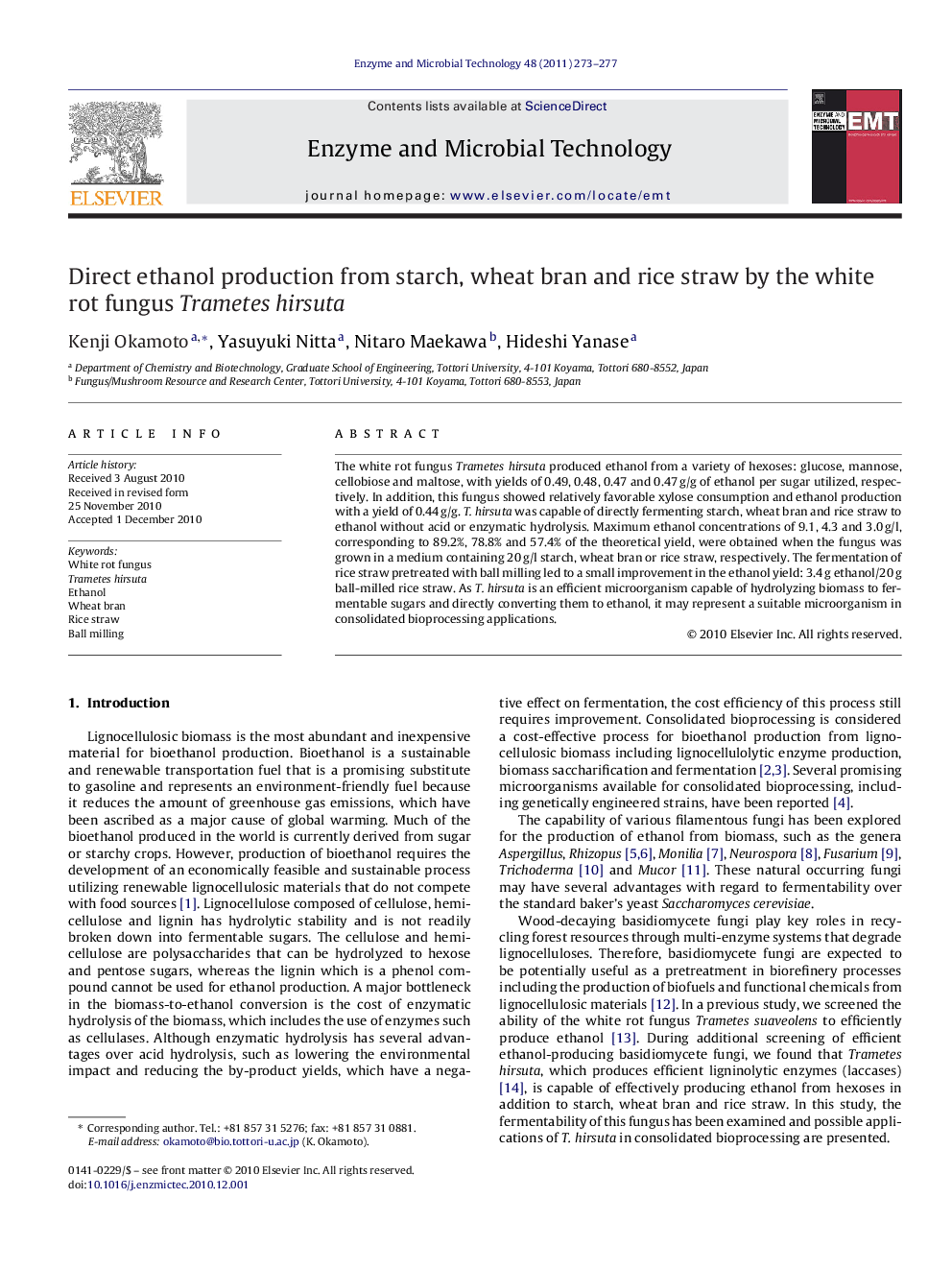| Article ID | Journal | Published Year | Pages | File Type |
|---|---|---|---|---|
| 10233102 | Enzyme and Microbial Technology | 2011 | 5 Pages |
Abstract
The white rot fungus Trametes hirsuta produced ethanol from a variety of hexoses: glucose, mannose, cellobiose and maltose, with yields of 0.49, 0.48, 0.47 and 0.47Â g/g of ethanol per sugar utilized, respectively. In addition, this fungus showed relatively favorable xylose consumption and ethanol production with a yield of 0.44Â g/g. T. hirsuta was capable of directly fermenting starch, wheat bran and rice straw to ethanol without acid or enzymatic hydrolysis. Maximum ethanol concentrations of 9.1, 4.3 and 3.0Â g/l, corresponding to 89.2%, 78.8% and 57.4% of the theoretical yield, were obtained when the fungus was grown in a medium containing 20Â g/l starch, wheat bran or rice straw, respectively. The fermentation of rice straw pretreated with ball milling led to a small improvement in the ethanol yield: 3.4Â g ethanol/20Â g ball-milled rice straw. As T. hirsuta is an efficient microorganism capable of hydrolyzing biomass to fermentable sugars and directly converting them to ethanol, it may represent a suitable microorganism in consolidated bioprocessing applications.
Related Topics
Physical Sciences and Engineering
Chemical Engineering
Bioengineering
Authors
Kenji Okamoto, Yasuyuki Nitta, Nitaro Maekawa, Hideshi Yanase,
